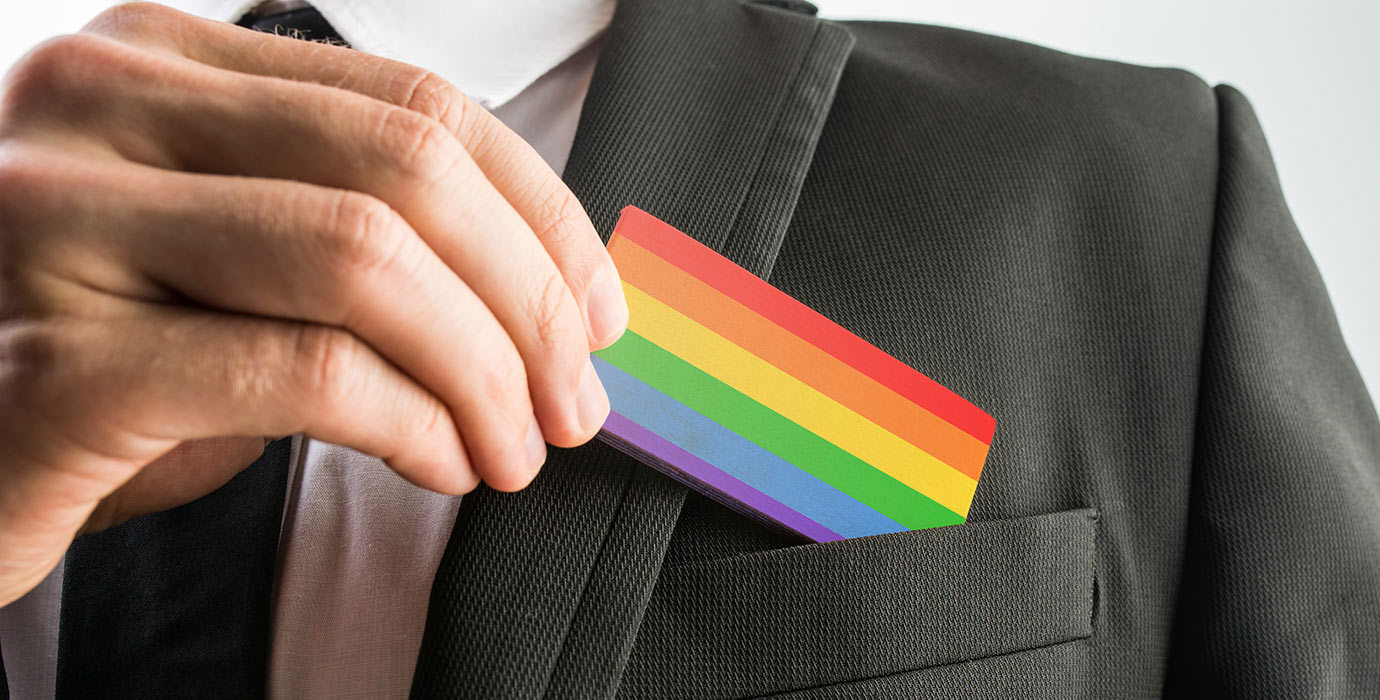
The last few decades have seen great progress in recognizing the rights of LGBTQ2S+ people. Many employers are committed to providing a welcoming, safe, and fair workplace environment for gender and sexual minorities.
However, some employers may not know how to go beyond simply meeting diversity targets and legal requirements. They need guidance on making LGBTQ2S+ workers feel included and supported day to day.
The role of employment counsellors
As a counsellor, you can advise employers on steps they can take to develop workplace policies, culture, and procedures that are truly inclusive. You can help them recognize:
- Their legal obligations toward LGBTQ2S+ workers
- The spectrum of differences within this group, including gender identity, gender expression, and sexual orientation
- How to develop basic workplace policies and accommodations for this group
- How to go beyond the basics to build a culture of inclusion
Even well-intentioned employers may not fully understand the differences between groups within the LGBTQ2S+ community, or their legal responsibilities toward people in these groups. You can help by offering context and providing a safe space to ask questions.
The Alberta Human Rights Act [pdf] prohibits discrimination based on sexual orientation, gender identity, and gender expression.
The Alberta Human Rights Commission offers the following definitions:
- Gender—The state of being male, female, transgender or 2‑spirited.
- Gender identity—A person’s internal, individual experience of gender, which may not coincide with the sex assigned to them at birth. A person may have a sense of being a woman, a man, both, or neither. Gender identity is not the same as sexual orientation.
- Gender expression—The varied ways in which a person expresses their gender, which can include a combination of dress, demeanour, social behaviour, and other factors.
- Sexual orientation—A person’s actual or presumed sexual orientation, whether gay, lesbian, heterosexual, bisexual, or asexual.
By law, employers must:
- Have equitable practices for hiring and promotion
- Provide an environment free of harassment
- Offer equal pay for the same or substantially similar work performed by employees of any gender (female, male, transgender, or 2-spirited)
Workplace policies
As an employment counsellor, you can encourage organizations to review their workplace policies in light of the specific concerns of LGBTQ2S+ communities.
Anti-discrimination and anti-harassment
Despite the progress made in recent years, workplace discrimination and harassment will still be a major concern for many of your LGBTQ2S+ clients. For employers who do not already have a written anti-discrimination and anti-harassment policy, you can provide guidance on how to develop such a policy.
For example, you might suggest that employers:
- Make sure that the policy specifically includes sexual orientation, gender identity, and gender expression.
- Outline standards and expectations for behaviour, ideally with examples.
- Include procedures for filing a complaint. Explain how the organization will support someone who has experienced or witnessed harassment, and outline the disciplinary procedures for harassment.
- Clearly communicate the policy to employees and contractors. Post it on the company website, give it to new employees during onboarding, and include it in procurement documents.
- Review the policy regularly. Make sure it is up to date on human rights requirements and language.
Benefits
Counsellors may also collaborate with employers in reviewing their benefits package. To make sure that it meets the needs of LGBTQ2S+ employees, they should consider including:
- LGBTQ2S+ partner benefits
- Gender-neutral language for bereavement and parental leave
- Health coverage that includes hormone prescriptions, therapy, and related procedures such as electrolysis, as well as time off for gender transition-related medical procedures
- Coverage for drugs related to HIV/AIDS
General policies
“Rather than stating what is appropriate and professional dress for men and women, why not state that all employees must dress to meet professional standards, without dictating whether people should wear skirts or pants?”
— Great Place to Work and Pride at Work Canada, Beyond Diversity [pdf]
To help employers create a more inclusive environment for your clients, you might suggest these best practices:
- Review company forms, website, brochures, and policies for gendered language. On forms, ask for gender, not sex, and give at least one option other than male or female.
- Invite all employees to list pronouns on email signatures and customer-facing nametags.
- Provide gender-neutral washrooms (with the understanding that everyone should be able to choose their own washroom).
- Create a gender-inclusive dress code.
- Offer supports for LGBTQ2S+ employees when going on work-related travel to places that may not be safe or inclusive.
- Take steps to protect private information, including former names or trans identity.
- Consider using diverse suppliers and review their non-discrimination and inclusion policies.
Gender transition guidelines
Employers may not have considered specific supports for employees undergoing gender transition. Key strategies you can suggest include:
- Creating general gender transition guidelines that contain protocols for changes to names and gender markers, as well as privacy protocols
- Developing an individual written transition plan in consultation with the employee
A culture of inclusion
A recent study showed that more than 50% of LGBTQ2S+ employees feel the need to hide their identity at work. Formal policies are essential in creating an equitable workplace, but real change also requires a shift in workplace culture. As you build partnerships with employers, you can recommend ways they can actively welcome LGBTQ2S+ people into the workplace, address unconscious bias among managers and co-workers, and make inclusion a day-to-day reality.
Proactive recruitment
“Knowing the important role that recruiters and hiring managers play in our workforce, it is important to provide them the tools they need to challenge their own biases and assumptions about who would be a ‘good fit’ for an organization. Recognizing the specific experiences of trans and non-binary people when it comes to hiring is particularly important and has the greatest potential for positive impact.”
— Pride at Work Canada, Hiring Across All Spectrums [pdf]
Often, organizations show their interest in inclusion by participating in Pride parades and other LGBTQ2S+ events. But many job seekers from this group see networking and recruiting outreach as more important signals from employers.
For employers who want to show that they actively welcome LGBTQ2S+ job seekers, you might suggest the following strategies:
- Create job postings that specifically encourage LGBTQ2S+ candidates to apply.
- Partner with organizations like Pride at Work Canada and the Alberta LGBTQ+ Chamber of Commerce, and attend targeted career fairs.
- Display inclusive signage, such as a rainbow flag, at career fairs (including fairs that are not just for LGBTQ2S+) and in the workplace.
Education
“People managers are often the first point of contact for questions around health benefits, dress code, use of washrooms, etc., so it is important that they can answer questions confidently and respectfully, and know where to direct an employee if further support is needed.”
— Great Place to Work and Pride at Work Canada, Beyond Diversity
Educating the workforce is an important part of inclusion efforts. Diversity training should be offered to all workers, but research suggests that optional training tends to be more effective than mandatory training.
The following are some best practices you can suggest to employers:
- Offer diversity training to all workers as part of onboarding and on an ongoing basis.
- Though training may be required or optional, avoid singling out particular groups or departments. Participants may not respond well if they see the training as punitive or remedial.
- Tailor training to the needs of different groups (people managers, human resources, customer service).
- Consider hiring external consultants to deliver training, either in person or through webinars or e-learning.
Engagement
Many companies successfully engage their workforce in inclusion efforts by:
- Modelling inclusion at the leadership level, with champions and LGBTQ2S+ people in executive roles
- Creating teams that expose workers to people from different groups
- Inviting managers and workers to help work toward diversity targets by participating in recruitment efforts
- Encouraging employees to act as mentors or allies to people in diverse groups
- Defining measurable diversity objectives and assigning a diversity manager to monitor the impact of different measures
- Building social accountability for change by establishing diversity task forces that involve employees from different groups
Employee resource groups (ERGs)
Along with other engagement efforts, some employers set up employee resource groups (ERGs) for LGBTQ2S+ workers to provide networking opportunities and serve as think tanks.
Consider recommending ERGs as a way to:
- Create space for employees to safely discuss their concerns
- Provide referrals to local LGBTQ2+ resources
- Support local LGBTQ2+ community organizations
- Provide educational opportunities for employees
- Advise on how to better serve diverse customers
“It’s very easy for employers to post a sign or a sticker indicating that they’re queer-friendly, but the fact is that they have to put in the work. Too many of us have worked for people who made the claim but just couldn’t be bothered to use our pronouns, include our partners, or put in the time to learn about microaggressions. Too many of us have been burned by people who claim to be trying their hardest and then get angry with us for correcting them, until eventually we’re told we’re just not a good fit with the company.”

